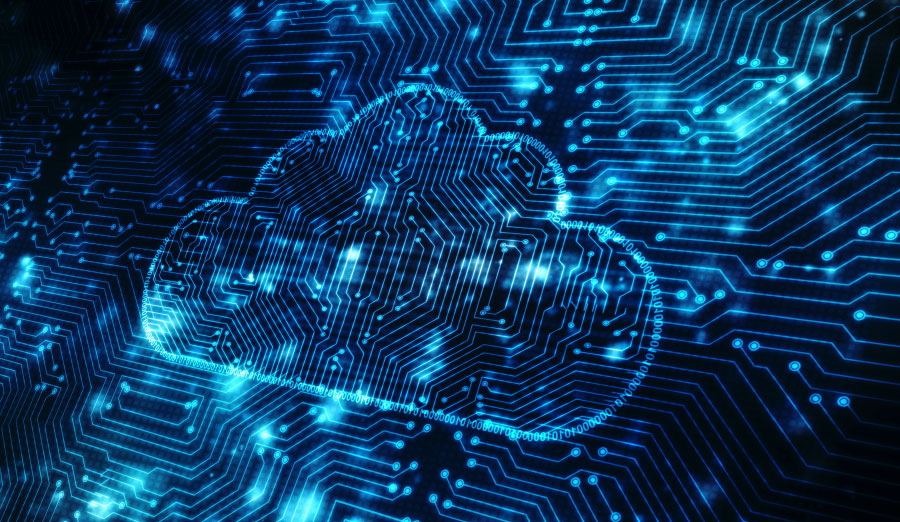Anyone who has watched the news, read a blog or happened across a computer in the past 12 months or so, should have their own way to define “the cloud.” Unfortunately, most of these definitions will be completely different from one other.
The cloud can be explained as a number of things: a file store in the Internet, the place where you can store your photos and music for free, a distributed computing network with awesome power, or white fluffy things in the sky – all are valid definitions.
And that goes a long way to explaining why, to the average consumer, all this talk about “the cloud” is confusing. So let’s ask the question and get it over with: What is the correct definition of “the cloud”?
Defining the cloud
Whether this is the definition is subject to debate, but here is certainly “The cloud” is a term used to describe a wide range of technologies that are accessible through high-speed connections to the Internet and private networks.
Now, before the technically-minded folks among us start gnashing their teeth and tearing out their hair in frustration, exclaiming that this simple definition does not do justice to the amazing technology that makes the cloud possible or even begin to cover the different types of cloud available, please bear with me. In my humble opinion, much akin to electricity, the average consumer does not require a detailed scientific explanation of “how the cloud works” in order to be able to use it or to see what it can do for them.
At the same time, intelligent, curious and savvy consumers deserve a better explanation than simply “The Cloud is the Internet,” if for no other reason than “private clouds” can function without any connection to the Internet whatsoever!
But is the above definition all we need?
No!
Understanding a wide range of technologies
We need to understand the “wide range of technologies” that are available thanks to the cloud, and what this means to our lives. If you are prepared to spend a little time understanding each one, then a reasonable understanding and comfort level with the term is well within your reach.
So, what are these aforementioned “wide range of technologies”? Well, although the Internet has been around for many, many years, only in the very recent past have we had the ability to access it (and private networks) across incredible high speeds from almost anywhere in the world.
The variety and power of the devices available to access and use the Internet – smart phones, tablets, even Internet-enabled cars – have formed a virtuous circle of sorts, with each spurring the other on to even greater things. With this increased availability and accessibility has come a cacophony of things that can be done with such reliable, fast connectivity. Some of these things are (and are not limited to):
- Accessing software applications (cloud applications)
- Storing personal files, photos, music, etc. (cloud storage)
- Getting more computing power (cloud computing)
- Using computer network and infrastructures (cloud infrastructure)
If you’re thinking that you’ve been able to do some of these things for many years, you would be correct. The word “cloud” is slapped on a lot of existing technologies, for right or for wrong. There’s even a term to describe this: “Cloud-Washing.” Now, if butterflies of enlightenment are not yet flying around your head, stay with me. There is light at the end of the tunnel. We see that vendors are getting wise to this confusion over all things cloud and are starting to classify their offerings.
Cloud-CRM, Cloud-ERP and Cloud-ECM are new and more specific terms, making it at least a little easier to focus on what the cloud is used for. Unfortunately, work is still required to understand whether the vendor is offering cloud storage, cloud processing or a combination of both – but in reality it shouldn’t matter. You shouldn’t need to worry about it.
Why?
It shouldn’t be cloudy – it should be transparent
Any cloud solution you or your organization works with should be completely transparent to users as to where the solution lives or how it operates. This is key. What is most important is that you can access that software and make good use of it from wherever you happen to be.
So if you access the software via a web-browser – it may be sitting on a server in the room next to you. Or maybe you access some software via an application on your desktop or a mobile app or a text-only terminal. Data and processing power can sit anywhere.
Yes, the business needs to be sure it knows where its data lives, and that the data is secure, backed-up, and the service is good. But those issues are the same for their internal IT department or for a third-party cloud provider.
So back to the original question: What is “the cloud”? My answer is that the cloud is ubiquitous. Like electricity, it is just there – to be used when necessary, for whatever purpose you as a user or business want to use it for. If that is file storage, hosted ECM, or playing the latest video game, that may or may not be the cloud – who knows and who cares!
Did that help? No?
Well, maybe the dictionary can – “Cloud: A dim or obscure area in something otherwise clear or transparent.”
I couldn’t have said it better myself.
